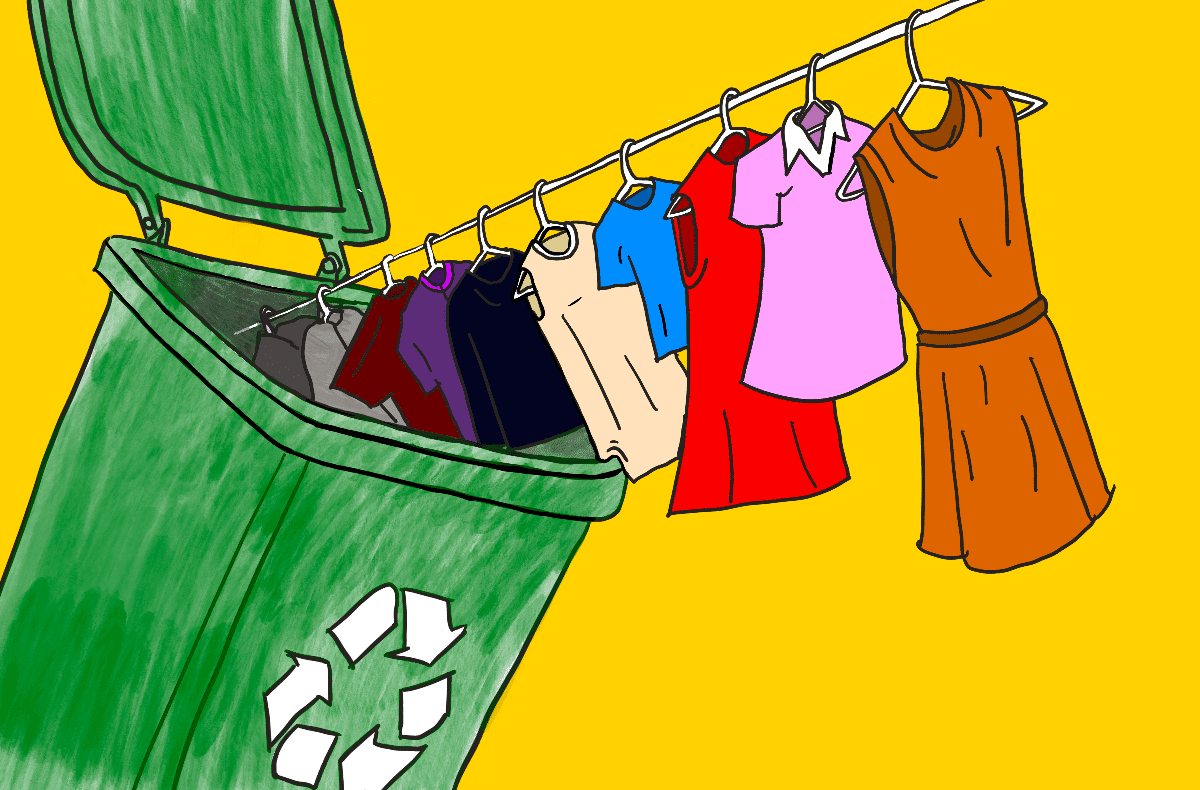
If Bella Hadid’s Coperni dress—the social media standout from the recent Paris Fashion Week—was fashioned from candy floss, it would have been the ultimate in sustainability. Instead, the spray-on “Fabrican” tech, a mix of synthetic polymers, was no substitute for a sugary and sticky confection when it comes to disappearing as quickly as it had been spun.
Terms like “Fast-Fashion” and “Disposable” have become dirty words with consumers. They are terms spat out with venom to generalize the wastefulness and problem of dealing with fashion’s increasing output.
But all fashion is fast. It’s in its nature to become obsolete before it is physically redundant. That’s what helps to sell so much stuff. It’s the giant game we all play within the global fashion business, from the luxury level to more affordable brands.
“Pre-loved,” “Resale,” and “Second-Hand” have become terms to try to make sense of dealing with stuff other people don’t want anymore. Let’s stop pretending. We need fashion to be more disposable, not less. Most of it needs to vanish as quickly as it has appeared.
The constants in the modern fashion consumer is the need to look different and an addiction to newness. We need to acknowledge this and not deny it. It’s okay. We should accept that people don’t want to keep most of the fashion they buy and prefer to chuck stuff away. We need to make it easier to throw things away and make all this unwanted apparel disappear. And donations can only go so far: it’s foolish and a wasteful use of time and energy to think that other people will continually want all your old stuff.
What if we thought differently and made clothes as disposable as a newspaper or drinks carton? What if clothes were designed to be worn once or twice and then thrown away—fast-disposal. You’d put your clothes in the recycling alongside your cans and plastic containers. Clothes that were designed to disintegrate, encouraging disposal, and were easy to throw away without filling landfills would remove a lot of the environmental guilt built into modern fashion and consumerism. Ultimately, and, most importantly to the fashion business, it would probably mean selling more. Kerching!
In Japan, washi paper clothing called kamiko has been made since the 10th century and in the 1960s, it became increasingly fashionable for dresses, shirts and skirts to be made from paper. A vintage fashion icon, Andy Warhol created a paper “Souper Dress” printed with his famous Campbell’s soup cans which is now seen in fashion museums the world over. Sales of disposable paper garments were said to top $3.5 million at the close of 1966. While many of these items were coated with synthetics, it should be a starting point of thinking about contemporary fashion. What if a business person bought five white paper shirts a week to be discarded alongside their FT at the end of the week?
At the moment, viscose is made from tree fibers, though it can be partially synthetic, but many consumers are unaware of its origins. This illustrates how consumers aren’t encouraged to look at fabric made-from labels in general.
Let’s make “Throwaway Fashion” cool. It could become a positive term. It could mean that your fashion has nearly zero impact and isn’t floating around this new preloved universe like annoying space dust.
Let’s make garments easier to recycle. Stick to one-fiber material, and give consumers the opportunity to sort and throw away in specific recycling bins, rather than chucking old garments into a black garbage bag to leave surreptitiously outside the charity shop.
In 2020, the Swedish fashion giant, H&M, launched Looop, a machine that dissembles old garments and reassembles them into new ones. The garments were cleaned, shredded into fibers, and spun into new yarn which was then knitted into something new. The system used no water and no chemicals.
If items were made from 100% linen or 100% cotton, for example, it would be easier and cheaper to recycle using machines like this. At the moment, it is cheaper to make entirely new fabric rather than using recycled fibers, unless using precious fibers like cashmere. (“Recycled cashmere” is popping up increasingly on retailers’ sites.)
It is often worth noting that many fabric labels don’t correspond with the actual make-up of the garment. If this were happening in the food industry, it would be much more widely spoken about.
Another option is to give value to fashion waste. If something is given a value, then it is more likely to be dealt with than discarded. Images of Ghanaian dumps full of Western clothing brands would hopefully become a thing of the past.
In 2019, the UK government was given a report called Fixing Fashion, written by the Environmental Audit Committee (EAC). It called on the UK government to make fashion retailers take responsibility for the waste they create and suggested adding a 1p producer responsibility charge on each item of clothing that could pay for better clothing collection and recycling. It was rejected.
Much like a plastic bottle recycling scheme—seen around the globe in places like Iceland, Ecuador, the Netherlands, Croatia, and all of Scandinavia—this type of policy could give value to waste and stop it from being sent to landfill. It would incentivize people to deal with waste through proper channels. Governments are often against new taxes, but they do change behaviors from both producers and consumers.
Being encouraged to throw things away responsibly makes more sense than pretending and being hopeful that things simply disappear on their own. They won’t. It’s also patronizing to people who spend less on individual items of clothing purchased from so-called “fast-fashion” retailers that they should buy less. Let’s celebrate that people can buy as much as they want. Let’s celebrate having lots of clothes and looking different on Instagram every day if you want to. We could even “like” it. We just need to think differently about disposable and make it as easy and as environmentally friendly as possible.
“What’s this? Oh, it’s just *insert brand*’s new ‘Throwaway’ collection!”



